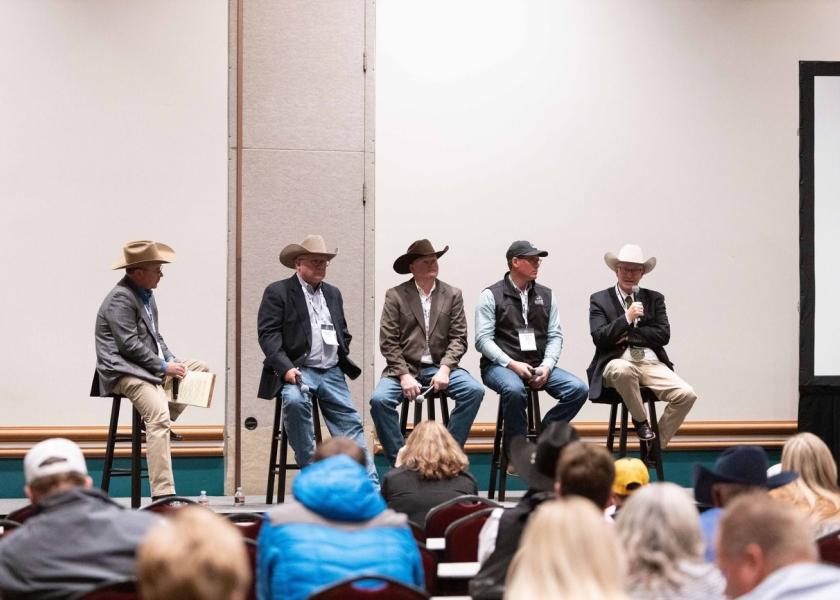Genetics Drive Conversation for Profitability of Commercial Cattlemen

|
Cost of gain increases, black-hided cattle market saturation and tight supplies due to weather are all challenging the commercial cattlemen today. How do they stay profitable amidst the market? During the 2022 Angus Convention in Salt Lake City, Utah November 5, the AngusLinkSM team hosted the Capturing Value session. The session aimed to help commercial producers learn how to capture more value for their calves so they can continue to face challenges but remain profitable. Troy Marshall, director of commercial industry relations for the American Angus Association®, moderated a panel including Terrill Ostrum, livestock broker; Jordan Willis, cow-calf producer; Joe Goggins, Angus breeder and auctioneer; and Jed Connealy, Angus breeder and cattle marketer. Each panelist actively engages with cow-calf producers, but also have a hand in other sectors of the industry. Regardless of their positions, panelists talked optimistically about the future, especially when discussing ways to earn a premium or a few more dollars for their calves. There are plenty of programs and opportunities, said Ostrum. Connealy agreed. "I think there is a pile of opportunity and the gap between good cattle and bad cattle gets wider all the time," he said. For those focused on raising good cattle, panelists shared ways those producers could earn more money and stay profitable. For many of them, genetics were key. Goggins said the number one thing to consider is buying good bulls with genetic value. "Those invested in the feeding industry, we know the people who buy good bulls. We know the people who have watched their Ps and Qs as far as not only carcass but performance and fertility and everything," said Goggins. Connealy takes those superior genetics and quantifies them through AngusLink’s Genetic Merit Scorecard. Understanding exactly what kind of bulls those producers bought and how those cattle are geared, it’s easy to make a connection and know where cattle would fit best, said Connealy. "We work pretty closely with customers, so I don’t know who else would be better versed to do that [match cattle to buyers] rather than the genetic guy in the equation," said Connealy. Willis said commercial producers have opportunities to capture more value if they start thinking about marketing. He stressed that marketing is what sets themselves apart on sale day. "I think as cow-calf producers, we must put our marketing caps on," said Willis. "We work our tails off every day doing the daily jobs, but when it comes to marketing, I think we fall short." Cow-calf producers also need to find the right seedstock producer and build a relationship with them. Seedstock providers needs to know what works and what we need in our operation said Willis. Connealy adds that producers should get behind a program that already aligns with their goals to help build consistency in their operation. Ostrum said he purchases program cattle because of their consistency. "The most predictable cattle I buy on an annual basis are cattle who have tied to a program year after year after year and are taking some advice and some counsel from the seedstock producer," said Ostrum. Flipping the script, seedstock producers can communicate with their customers to build relationships and help them be successful. One step can be helping their customers interpret the important data needed for bull buyers to make better decisions based on their environment and situation, said Ostrum. For Goggins, he said people buy people they like, know and trust. "We all work in the agricultural business, but we are also in the people business," said Goggins. Through genetics and marketing programs, the panel shared several tactics and thought processes commercial cattlemen can use to grow their operation. At the end of the day, getting better might just mean doing something new. |







